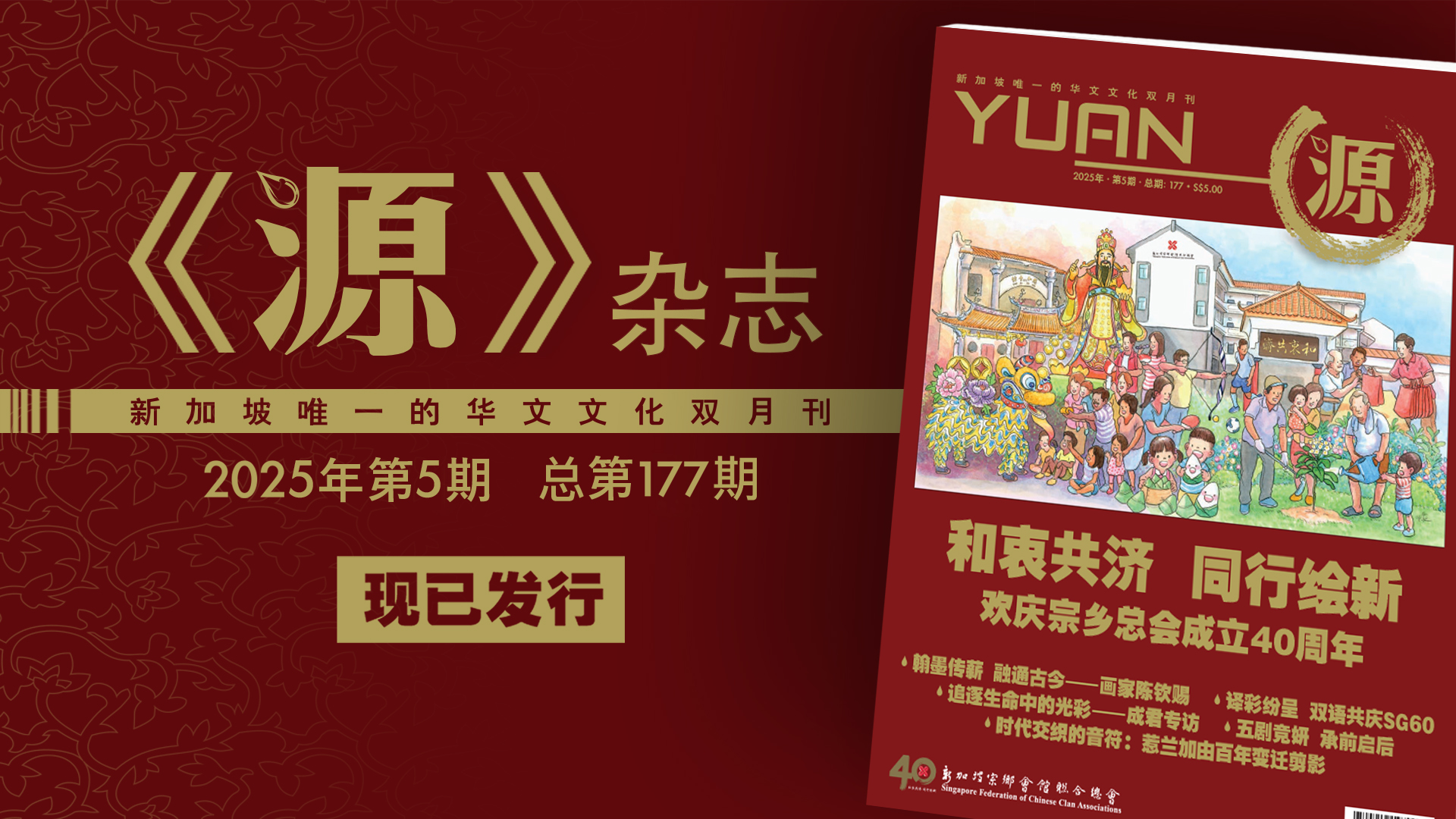新加坡儿童剧社
文 · “新加坡华族文化百科”编辑组
虽然仅存在了15年,儿童剧社对本地华语戏剧、舞台演艺等领域有着深远的影响,也栽培了一代的文化幼苗。
儿童剧社是活跃于1960、70年代的少儿文艺团体。该剧社从广播剧出身,之后成为舞台演艺的佼佼者,也从事出版业务,可谓全方位展现社员的才华。
创立于1965年6月12日的儿童剧社,最初附属于新加坡广播电台华文部。1964年底,电台因缺乏华语儿童演员,决定开办训练班。电台导播符和琳(1940-1990)负责招生,同是广播员的程茂德(1936-2007)后来接手担任导师。[1]程茂德是本地广播剧和青少年戏剧的推手之一,对华语戏剧、舞台演艺等领域有着深远影响。[2]
训练班的初衷是培养广播剧演员,但程茂德希望学员能朝多面发展与学习,因此也为他们制定走上舞台的目标。首届训练班开课当天便是“儿童剧社”成立之日。
儿童剧社的遴选标准严格,应征者必须有优良的学业成绩,以及歌唱舞蹈的潜能。首两届训练班共吸引多达2000人报名,最终仅选出约60人。剧社学员都是在校的中、小学生,通常在周末活动,进行排戏、录音、华语语音训练,以及哑剧表演等。
发展与活动
程茂德将不少世界名著、寓言和民间故事改编成广播剧,由学员演出。儿童剧社在1965年8月8日播出的第一个广播剧,是前苏联时期的作品《没子弹的猎枪》。除了儿童广播剧,剧社也在同年12月4日播出第一个访谈广播节目《艺苑新声》,让听众认识这些小演员。每周播出的两档节目都受到欢迎,让剧社逐渐收获一批忠实听众,包括对岸的马来西亚。约于同个时期成立,且以儿童为对象的团体,尚包括丽的呼声儿童话剧组(1966年成立,后改称少年儿童话剧组)。
儿童剧社成立一年半后,于1966年12月首次登台演出,在维多利亚剧院公演“儿童话剧之夜”,五晚的门票全数售罄。由于观众反应热烈,演出里的三个独幕剧《借雨伞》《宿舍风波》《儿童节前后》后来被录制成电视节目,让错过现场演出的观众有机会观赏。剧社最经典的演出要属多幕剧《表》,于1968年4月在维多利亚剧院演出七场。这个舞台剧也曾被录制成电视节目。儿童剧社之后曾与电视台合作,拍了《恩情深深》以及两个单元剧《失落的琴声》与《轨》。
1968年至1969年,剧社陆续成立多个小组,包括文艺组、口琴组、男声小组、女声小组、童声小组、舞蹈组、钢琴组、手风琴组、摄影组、美术组。过后条件成熟了,又成立铜乐队和民乐队。[3]儿童剧社在1969年推出《儿童文艺之夜》,演出儿童歌舞剧《兔妈妈种萝卜》和《森林里的宴会》,诗歌朗诵《公鸡和太阳》等,受到热烈欢迎,六场演出门票在开演前就售罄。[4]
儿童剧社也投入出版工作,1969年1月出版了第一期《骆驼》文艺周刊。“骆驼”之名源于《民报》在1968年开辟的副刊版面,当时程茂德受邀担任主编,发表社员的诗歌、散文、剧评、武评和剧本。骆驼文艺出版社后于1970年3月正式成立,也出版了《戏剧天地》和《年青人》杂志。出版社最多曾有近40名全职社员,但只维持几年便在1976年2月解散了。
同样在1970年,电台停播儿童广播剧及《艺苑新声》,程茂德离职电台,几乎全体社员也跟着他一起离开。儿童剧社自此成为独立的团体,开始往专业之路迈进。剧社离开电台后,几经搬迁,寻找合适的活动地点,最后落户于程茂德岳父在加东阿德路的一排旧矮屋,是剧社活动大本营。随着社员年龄的增长,青年剧社于1971年3月3日正式成立。
全盛时期,儿童剧社与青年剧社拥有500名社员,演出经常满座,场次纪录最多达31场;一轮演出下来,观众人数最多曾累计超过3万人次。儿童剧社从成立到解散的15年间,前后制作了13部舞台表演,并且培养了一代优秀的华语演艺人才。
剧社活动的中止
儿童剧社在如日中天之时,程茂德却于1976年宣布暂停剧社活动。这一年,有不少戏剧工作者因涉及政治活动而被逮捕。程茂德在2005年受访时坦言,考虑到当时的社会局势,他不愿意看到剧社活动失控而导致类似事件发生,因此认为剧社应暂停活动,重新思考未来的方向。[5]
以儿童剧社名义举行的最后一次演出,是在1980年的“小小世界儿童文艺晚会”。儿童剧社之后就正式走入历史,但它的影响力已经深入本地华文文教界,好些前社员至今仍秉持剧社的精神,积极培养未来一代的剧艺接班人。例如,福建会馆文化艺术团自1987年起开课的少儿演艺训练班,是由方百成、黄树平、黄秀玲、施曼华等前剧社社员一起创立的。蔡曙鹏则于1995年创立了戏曲学院。
在新加坡建国初年,百业待兴,文化建设有待开展,儿童剧社应运而生,所栽培的数百名文化幼苗,如华亮(1953-1995)、吴雪妮、蔡曙鹏、林少芬、方百成、王连三、邬伟强、何子石、翟志玉、黄秀玲、林仁余、杨帆、陈兆锦等,后来都成为剧场、广播、电视、文化及教育界的活跃成员;在华族文化传承过程中,儿童剧社和丽的呼声儿童话剧组等团体,发挥了奠基和播种的积极作用。
-800x521.jpg)
骆驼文艺出版社出品,儿童剧社与青年剧社演出《春常在》黑胶唱片,1975年。(新加坡国家博物馆馆藏,新加坡国家文物局提供)
-800x521.jpg)
骆驼文艺出版社出品,儿童剧社演出《儿童文艺之夜》黑胶唱片,1973年。(新加坡国家博物馆馆藏,新加坡国家文物局提供)
注释:
[1]谢燕燕,〈团体已解散还办‘50周年庆’,昔日社员情牵儿童剧社35载〉,《联合早报》,2015年6月15日。
[2]周文龙、林妙娜,〈华语戏剧界前辈程茂德肝癌逝世〉,《联合早报》,2007年2月1日。
[3]刘立,〈一个文化团体一世情——儿童剧社55周年〉,《联合早报》,2020年7月9日。
[4]蔡曙鹏,〈唱尽人间喜与忧——新加坡的表演艺术〉,页470.
[5]黄嘉一,〈儿童剧社从广播走上舞台——听程茂德老师说书〉,《源》杂志(2005年5月),页25.
The Singapore Children’s Playhouse
The Singapore Children’s Playhouse was an active children’s theatre group in the 1960s and 1970s. It had its roots in radio drama and later became a leader in stage performance, while also engaging in publishing activities to showcase the talents of its members. Established on 12 June 1965, it was initially affiliated with the Chinese department of the Singapore Broadcasting Corporation. At the end of 1964, due to a shortage of Mandarin-speaking child actors, the radio station decided to conduct training classes.
Thia Mong Teck (1936–2007), who was also a broadcaster, was one of the driving forces behind local radio dramas and youth theatre, and had a profound influence on Mandarin drama, stage performance, and other related fields. The first training session commenced on the same day as the establishment of The Children’s Playhouse, with Thia whom later took over as the mentor.
The Children’s Playhouse’s first radio drama, broadcasted on 8 August 1965, was The Hunting Rifle Without Bullets, a piece of work from the former Soviet period. Besides children’s radio dramas, the playhouse also aired its first interview programme, Yiyuan xinsheng (Art Garden New Voices), on 4 December of the same year. Around the same period, other arts groups targeting children were also established, including the Rediffusion’s Children’s Drama Group, which was established in 1966 and later renamed the Youth Children’s Drama Group.
A year and a half after its establishment, The Children’s Playhouse made its stage debut in December 1966, staging Children’s Playhouse Night at the Victoria Theatre. The most iconic performance of the playhouse was the multi-act play The Watch, which was staged seven times at the Victoria Theatre in April 1968 and adapted into a television programme.
From 1968 to 1969, the playhouse established various interest groups, including those focused on literary arts, fine arts, choruses for men, women and children, as well as dance, piano, accordion, harmonica and photography.
As it developed, brass bands and traditional Chinese orchestras were formed as well. The Children’s Playhouse ventured into publishing as well, releasing the first issue of Camel Art Literary Weekly in January 1969.
In 1970, the radio station ceased broadcasting children’s radio dramas and Yiyuan xinsheng. Thia resigned from the radio station and almost all the members of the playhouse left with him. Following their departure, The Children’s Playhouse became an independent organisation and began to professionalise. As its members grew older, The Youth Playhouse was officially established on 3 March 1971. At its peak, The Singapore Children’s Playhouse and The Youth Playhouse had 500 members. Their performances were often sold out with a record of up to 31 shows per run. The highest number of audience they ever witnessed exceeded 30,000.
Thia announced the suspension of the playhouse’s activities in 1976, despite it being at the peak of its popularity. The final performance by Children’s Playhouse was held at the Little World Children’s Arts Evening in 1980. Thereafter, Children’s Playhouse officially became history. However, its influence had deeply penetrated the local Chinese cultural and education community. Even today, many former members still uphold the spirit of the playhouse and actively nurture future generations of successors in the theatrical arts.





